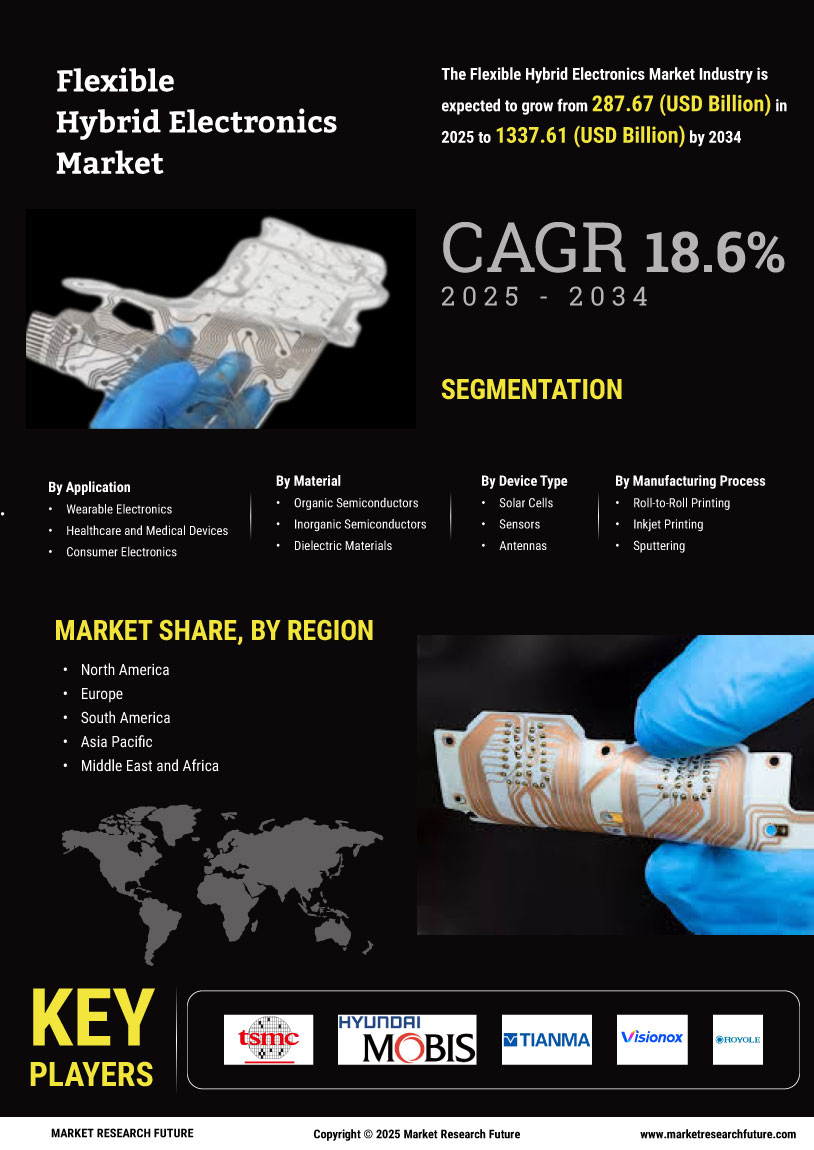Rising Demand for Wearable Devices
The Flexible Hybrid Electronics Market is significantly influenced by the rising demand for wearable devices. As consumers increasingly seek health monitoring solutions, fitness trackers, and smartwatches, the need for flexible electronics that can seamlessly integrate into these products becomes paramount. According to recent estimates, the wearable technology market is expected to reach over 100 billion dollars by 2026, with flexible hybrid electronics playing a crucial role in this expansion. These devices require lightweight, durable, and flexible components that can conform to the human body, enhancing user comfort and functionality. Consequently, manufacturers are focusing on developing innovative solutions that cater to this growing market, thereby driving the overall growth of the Flexible Hybrid Electronics Market.
Increased Focus on Energy Efficiency
The Flexible Hybrid Electronics Market is witnessing an increased focus on energy efficiency, driven by both consumer demand and regulatory pressures. As sustainability becomes a priority, manufacturers are exploring ways to create energy-efficient electronic devices that minimize environmental impact. Flexible hybrid electronics, with their lightweight and low-power characteristics, are well-positioned to meet these demands. The market for energy-efficient electronics is expected to grow significantly, with projections indicating a potential increase of 30% in the next five years. This trend is encouraging companies to invest in research and development to enhance the energy performance of their products. Consequently, the emphasis on energy efficiency is likely to propel the growth of the Flexible Hybrid Electronics Market as stakeholders seek to align with sustainability goals.
Emergence of Internet of Things (IoT)
The emergence of the Internet of Things (IoT) is a pivotal driver for the Flexible Hybrid Electronics Market. As more devices become interconnected, the demand for flexible electronics that can be embedded in various applications is surging. Flexible hybrid electronics offer the versatility needed for smart home devices, industrial sensors, and healthcare applications. The IoT market is projected to grow exponentially, with estimates suggesting it could reach 1 trillion dollars by 2030. This growth necessitates the development of compact, efficient, and flexible electronic components that can operate in diverse environments. As a result, the Flexible Hybrid Electronics Market is likely to benefit from this trend, as manufacturers strive to create solutions that meet the evolving needs of IoT applications.
Advancements in Manufacturing Techniques
The Flexible Hybrid Electronics Market is experiencing a transformative phase due to advancements in manufacturing techniques. Innovations such as roll-to-roll printing and additive manufacturing are enhancing production efficiency and reducing costs. These methods allow for the integration of electronic components onto flexible substrates, which is crucial for the development of lightweight and portable devices. As a result, the market is projected to grow at a compound annual growth rate of approximately 20% over the next five years. This growth is driven by the increasing demand for flexible displays, wearable technology, and smart textiles, which require advanced manufacturing capabilities. The ability to produce high-quality flexible electronics at scale is likely to attract more investments and foster collaborations among key players in the industry.
Integration of Flexible Electronics in Automotive Applications
The integration of flexible electronics in automotive applications is emerging as a key driver for the Flexible Hybrid Electronics Market. As the automotive sector evolves towards greater automation and connectivity, the need for lightweight and flexible electronic components is becoming increasingly apparent. Flexible hybrid electronics can be utilized in various applications, including dashboard displays, sensors, and advanced driver-assistance systems (ADAS). The automotive electronics market is projected to reach over 300 billion dollars by 2027, with flexible solutions playing a vital role in this transformation. This trend is likely to encourage collaborations between automotive manufacturers and flexible electronics producers, fostering innovation and driving the overall growth of the Flexible Hybrid Electronics Market.

















Leave a Comment